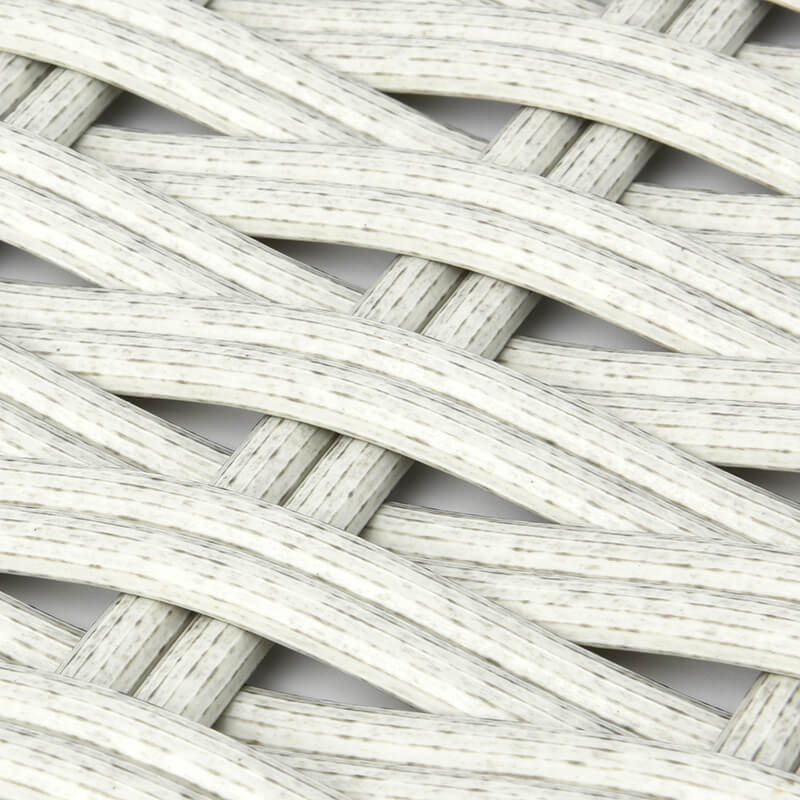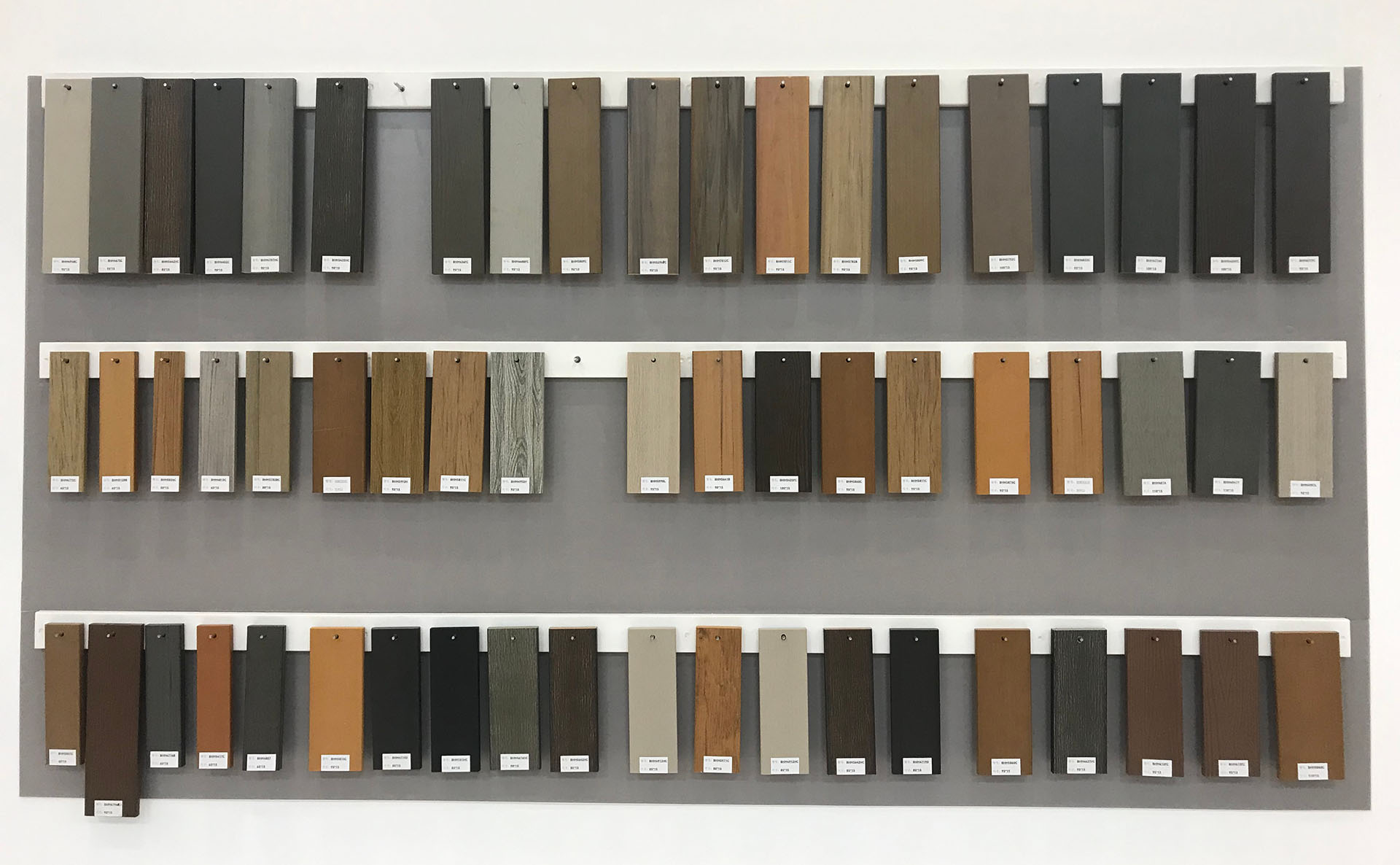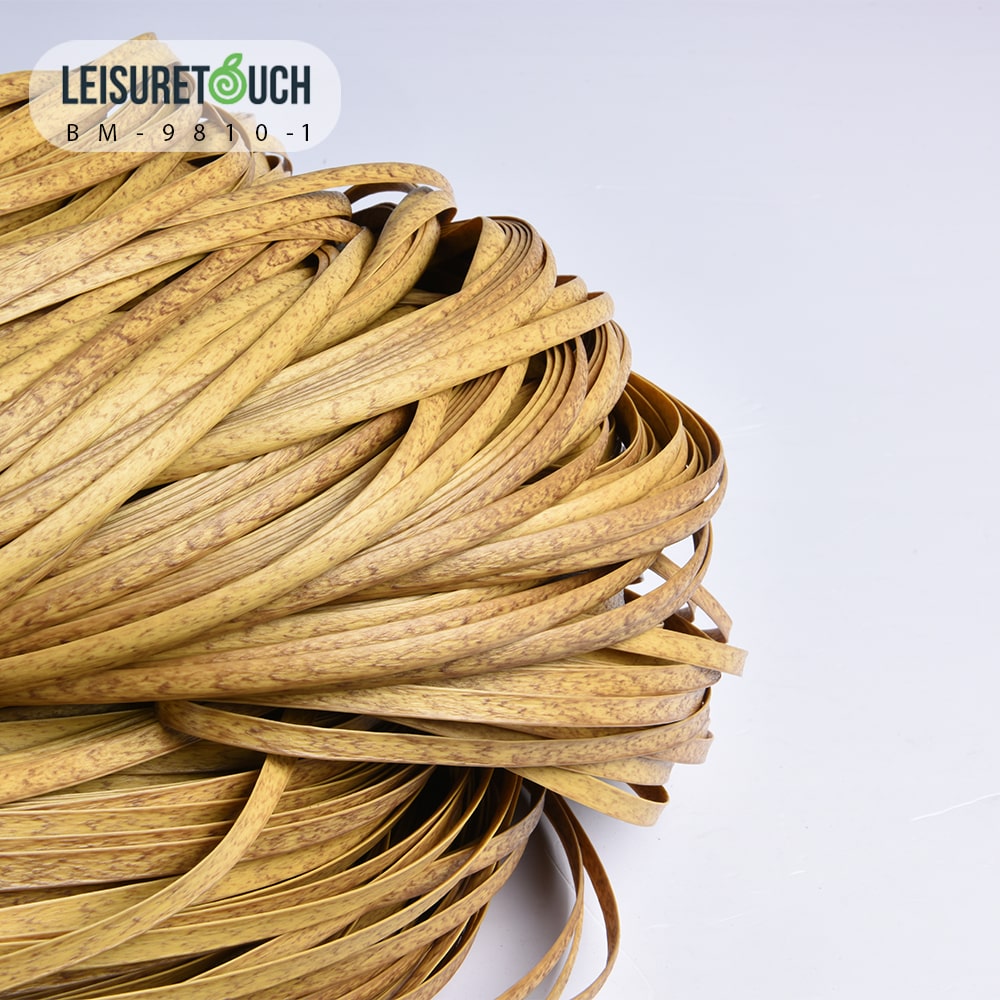How to Prepare Plastic Rattan Stripes Before Weaving
To begin weaving, first cut a rattan strip into the desired lengths. Soak the strip in cold water for 30 minutes to make it pliable. Wipe it dry and work it with your hands until it is ready. Once the strip is worked straight, you can start weaving.
To keep the rattan strips from drying out and getting dirty, hang them on a hook or peg and place a damp cloth over them.
What tools do you need?
- A sharp knife
- A peg
- A pair of round-nosed pliers
- An awl
- Two Bodkins
- A piece of rapping iron
- A seat weaver

Common Rattan Weaving Patterns and Techniques
A proficient rattan worker can improvise complex and creative designs. However, we highly recommend following the simple patterns below for beginners like most of us until you become proficient.
- Randing
Randing is one of the simplest weaves, involving weaving over and under from left to right (or vice versa).

To begin, put a piece of rattan over and under the ribs of a frame.
💡 The ribs of a frame refer to the structural support pieces attached to the main beams or posts of a frame. They are usually smaller in size and help distribute the frame load more evenly.
When you almost finish a strip, leave it behind the vertical ribs inside the structure, pointing in the weaving direction.
Next, lay a new strip on top of the end of the old one. Finally, continue weaving and repeating these three steps.
Randing is a great starting point for anyone new to weaving and looking to create simple patterns.
If you feel like diving deeper into weaving with PE rattan material, we recommend checking out the other weaving techniques from our specialists. Leisure Touch Rattan also offers professional masters who can train you and your employees to weave with their high-quality rattan materials.
- Pairing

Pairing involves weaving two strips of rattan together. This technique is often used for creating borders or patterns in a piece. To pair, start by laying one strip across the frame and weaving a second strip over and under it. Then, lay a third strip across the frame, weaving over and under the second strip. Continue this pattern, always weaving over and under two strips at a time.
Pairing is a simple but effective weaving technique that can add visual interest and complexity to a rattan piece. Everything is possible by weaving two strips of rattan together, from simple borders to intricate geometric shapes.
Now, try alternating the direction. For example, weaving over and under in the same direction will create a simple diagonal pattern, while weaving in opposite directions will create a more complex herringbone pattern.
💡 Herringbone is a pattern often used in fabrics, flooring, and brickwork. It comprises a series of short parallel lines that are diagonally arranged and resemble the bones of a fish.
- Slewing

Slewing is a weaving technique that involves wrapping a single strand of rattan around a frame, working towards one direction. To begin, attach one end of the rattan to the frame with a peg or clip. Then, wrap the rattan around the frame, pulling it tight as you go.
By varying the tension of the rattan and the spacing of the wraps, it is possible to create everything from simple, straight lines to complex, curving shapes.
Slewing can create simple designs or be combined with other weaving techniques to add texture and depth to a piece.
With a little practice, slewing is easy to master and can create a wide range of patterns and designs.
- Waling

The technique of waling involves creating a woven border around a piece of rattan furniture. To begin, weave a row of randing around the edge of the piece, leaving a small gap between the randing and the frame. Then, weave a second row of randing on top of the first, but this time, weave it over and under the vertical ribs of the frame. Continue alternating between weaving over and under the vertical ribs until completing the waling border.
Waling is a simple but effective weaving technique that can add visual interest to rattan furniture. By weaving a border around the edge of the piece, it is possible to create a more finished and polished look. Waling can be combined with other weaving techniques to create complex designs and patterns, or it can be used to add a simple but elegant border to a piece.
- Braiding

Braiding means twisting together multiple strands of rattan to create a thicker, stronger cord. This cord can then be used in various ways, such as for edging or creating decorative elements on a piece of rattan furniture.
Cut three or more strips of rattan to the same length to braid rattan. Then, hold the strips together at one end and twist them together tightly. Once the strips are twisted together, begin braiding them by crossing the outermost strip over the centre strip, then crossing the new outermost strip over the centre strip. Continue this pattern, always crossing the new outermost strip over the centre strip until you have braided the entire length of the rattan.
Braiding is a versatile technique that can add much visual interest and texture to a piece of rattan furniture. By braiding multiple strands of rattan together, it is possible to create a thicker, stronger cord that can be used in many ways.
How to Weave a PE Rattan Stool
Preparing the Supplies:
- A stool frame with holes for passing cane.
- Split rattan strips that are correctly sized for the holes.
- Pegs.
- Knives.
- Additional rattan strips.
💡 In woodworking or craftworking, pegs refer to small wooden dowels that hold joints together.


Prep Work
- Soak the split rattan for half an hour
- Sharpen the ends of each piece of rattan to make threading easier
- Dry and straighten the rattan stripes after soaking
Start Weaving
To start weaving, position yourself midway along the long edge of the stool, with the top of the frame facing you.
Begin by pushing a piece of rattan down through the centre back hole so that 1 inch hangs down underneath.
Wedge it into position with a peg.
Next, take the main strip across to the opposite hole on the frame and thread it through.
Pull it tight and peg the next hole, ensuring the strips do not twist.
When one length of rattan is finished, join in a new one by threading the end twice over a strand between two holes at the back.
Start weaving from the back to the front and then repeat from side to side, letting the second row of rattan be on top of the first.
After completing the basic framework, you may proceed to add diagonal weaving.
To do so, begin from two opposing corners and finish at the two holes on either side of the other two corners. Do one-half first, weaving the rattan under and over the points where the first two sets of rattan cross. Do not take adjacent diagonals over and under the same point, but keep them opposite.
When you come to an intersection, let it go over if the existing one goes under it, and vice versa.
Edge the rattan panel
To create an edge for the rattan panel, follow these steps:
- Direct the beading strip towards a corner hole.
- Bend the beading strip down the seat’s edge and insert a small piece into the next hole.
- Place the fine piece over the beading one, pull it tightly, and move it under the frame to the next hole to maintain the position of the beading rattan.
- Repeat this technique around the chair, starting afresh at each corner with a different beading rattan strip.
- Once the rattan dries, use a sharp knife to trim and tidy up any loose ends under the chair.
Tips for Weaving
- Take your time: Weaving can be slow, but rushing is worse due to ensuing mistakes and uneven results. Slow down and focus on the process.
- Keep your hands clean: Oils and dirt on your hands can leave marks on the rattan and make it more difficult to weave. Keep your hands clean and dry.
- Use good quality materials: High-quality rattan strips should always be your only option over lower-quality materials.
- Practice different weaving techniques: Experiment with different patterns and techniques to create unique and interesting designs.
- Don’t be afraid to make mistakes: Weaving is a learning process, and mistakes are okay. Learn from your mistakes and keep practising.
Where can you learn weaving techniques?
- Online video courses: Many online courses are available that cover a wide range of weaving techniques and topics. Some are free, while others require payment. Look for courses that offer step-by-step instructions, clear visuals, and opportunities for feedback and questions.
- Local workshops: Check with your local community centre, arts and crafts store, or adult education program to see if they offer weaving workshops. Experienced weavers often lead these workshops, and meeting other weavers can be an interesting and rewarding experience.
- Local crafts community: At a local crafts community, positively connect yourself to other weavers and learn new techniques. Look for groups specialising in weaving or fibre arts and attend meetings, workshops, and events.
- Leisure Touch Rattan Service: If you are interested in weaving with PE rattan material specifically, Leisure Touch Rattan offers a service where we can send professional masters to your local factories to train your employees. It is absolutely worthy due to hands-on experience with the material and communications with experts in the field.

Where do you buy PE rattan for furniture making?
Synthetic rattan is becoming increasingly popular for its durability, strength, and weatherability. It is a great alternative to natural rattan since it offers the same appearance and properties but with more advanced features that make it ideal for outdoor furniture.
Most synthetic rattan materials are produced in Asia, where factories have developed sophisticated techniques for rattan weaving. Among them, Leisure Touch Rattan is China’s leading plastic PE rattan and PS wood board manufacturer.
Our company offers over 10,000 distinctive designs that can cater to every customer’s needs. Furthermore, we welcome customisation, allowing customers to design their furniture according to their preferences.
We have rich experience in helping our customers build rattan furniture in their countries under the principle of adapting to local conditions. We have achieved this by having a team of experts who offer professional training in rattan weaving techniques.
Conclusion
Choose Leisure Touch Rattan Company for prime-quality rattan materials and practical weaving training. You will take a big and correct step towards success by partnering with us. We have earned a reputation of integrity from our customers and even competitors over the past decades. Your initiatives and thoughts are our commitments and missions.
Feel free to contact us today to push your rattan furniture-making journey towards success!








